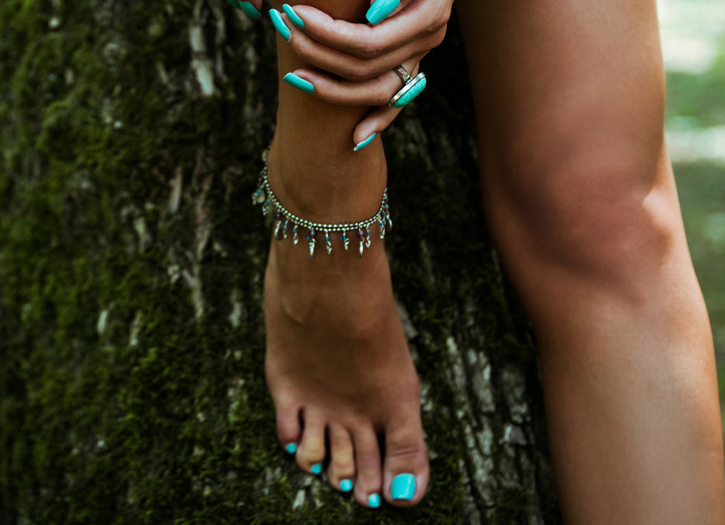An anklet, also called ankle chain, ankle bracelet or ankle string, is an ornament worn around the ankle.Barefoot anklets and toe rings historically have been worn for at least over 8,000 years by girls and women in South Asia.
They have also been worn by Egyptian women since predynastic times. In the United States both casual and more formal anklets became fashionable from the 1930s to the late–20th century. While in Western popular culture both younger men and women may wear casual leather anklets, they are popular among barefoot women. Formal anklets (of silver, gold, or beads) are used by some women as fashion jewellery. Anklets are an important piece of jewellery in Indian marriages.
Anklets were worn as an everyday ornament by Egyptian women of all social classes in ancient Egypt from as early as predynastic times. The name for anklets was not much different from that of bracelets being menefret (mnfrt) except by adding a phrase to denote connection to the feet. They were made of different metals and in multiple shapes, with more expensive metals like gold being more common among the rich, while less expensive ones like silver and iron more common among lower social classes.
During the fourth, fifth, and sixth dynasties, anklets were usually made of beads threaded in several rows held together with spacer-bars. Anklets were also worn by dancers like those shown in the tombs of Kagemni, Ti, and Akh-hotp.In the early–20th century, anklets were commonly worn by Egyptian women of inner cities. They were called kholkhal (pl. khalakheel) and were most commonly worn by women of Alexandria, along with a traditional dress covered by a one-piece black cloth called melaya leff. Today, anklets are not commonly worn by Egyptian women in public due to increased Islamic conservatism that has spread in Egypt where wearing anklets in public is generally perceived as being immodest.
Bronze anklets are visible as early as the Bronze Age in temperate Europe, in an area roughly along the Danube, in the Alpine foreland, up the Rhine to the Atlantic, and also down the Rhône (Sherratt, 2001). These were found among hoards in these areas, along with other bronze items characteristic of this time (c. 1800 BCE onwards), and are attributable to the Tumulus culture that spread across this region.
In the eastern Indian state of Odisha, which is known for its traditional jewelry, there are varieties of anklets known as Paunji Nupur, which are worn by women. Another variety, which covers the entire foot, is known as Padapadma. In ancient times men also wore anklets. Traditionally, only Kshatriya (royal/warrior caste) persons can wear gold anklets, and other castes wear silver anklets.The word “payal” (payalak) is a word for the anklet in Hindi and Punjabi.In Bengali language anklet is called “nupur” and widely worn in Bangladesh. Anklets can be made of silver, gold, and other less precious metals as well as leather, plastic, nylon and other such materials.


















Add Comment